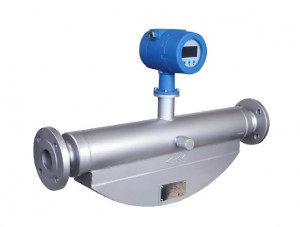Sulfuric Acid Flow Meter
The Coriolis mass flow meter has grown into a critical instrument in the precise measurement of sulfuric acid, also a significant component in various industrial processes. It stands out by the virtue of its accuracy and reliability in processing the challenging substances in the chemical industry. Sulfuric acid, renowned for a high corrosive nature, needs meticulous handling to guarantee safety and efficiency. In such an occasion, the Coriolis mass flow meter is an ideal option for industries attaching much importance to accuracy.
In the following article, I will walk you through complicated nuances on the significance and advantages of sulfuric acid measurement. Follow my steps to dissect the intricacies of the technological miracle, illustrating its outstanding performances in addressing longstanding challenges and elevating the level of efficiency. Click here to know more about Coriolis flow meter principle.
Advantages In Sulfuric Acid Measurement
The Coriolis mass flow meter is a robust solution in addressing challenges in sulfuric acid measurement. It plays a transformative role in ensuring consistent product quality of automatic processing lines regarding acid dilution. It also matters in applications in which the precise quantity of acids requires to be adjusted. The meter is beneficial in control of acid consumption and acid strength, therefore it is also helpful in optimizing process efficiency and cost-effectiveness.
In addition, regular calibration is critical for keeping its accuracy, ensuring precise readings even in harsh conditions. For example, Coriolis mass flow meter are installed outdoor in acid plants.
Applications of Coriolis Flowmeter for Sulfuric Acid
The Coriolis flowmeter has turned to be an inevitable instrument in measurement and management of sulfuric acid. Its versatility contributes greatly to high precision in processing relating to sulfuric acid, a cornerstone of optimal performance in a variety of applications.
The accurate measurement of sulfuric acid is paramount in many industrial fields, such as chemical manufacturing, petrochemicals and pharmaceuticals relying heavily on precise handling of sulfuric acid. Moreover, it could be applied to wastewater treatment plants, in which sulfuric acid grows important in pH adjustment. Sulfuric acid measurement is significant in neutralizing alkaline waste.
More application could be found in leaching operations of metal processing and mining, enhancing usage of acid and operational efficiency.
Tricky Challenges and Solutions
In spite of outstanding performance in accuracy, reliability and mass flow measurement, the Coriolis mass flow meter brings forth challenges needed to be addressed by innovative solutions and technical advancements.
The highly corrosive sulfuric acid raises higher requirements over the durability of Coriolis mass flow meters. The accuracy and reliability will decrease with the increasing operation time. In addition, fluctuations in temperature and viscosity may influence precision of measurement, so it is crucial to shoot the trouble.
Special materials and coatings resistant to sulfuric acid are developed to meet the corrosive challenges. Technological advancements embody in the integration of temperature and viscosity compensation algorithms, keeping accurate readings independent of fluctuations. Besides, potential issues are taken under real-time monitoring after introducing smart diagnostics and self-correction features, making users to take proactive measures upon they occur.
Coating and Electrode of Flow Meter
When it comes to sulfuric acid meter, selection of coating and electrode is directly related to the lifespan and measurement accuracy. In general, coating for a mass flow meter is made of polytetrafluoroethylene and a tantalum electrode is recommended; a platinum electrode is recommended in case the concentration is high.
Polytetrafluoroethylene, the king of plastic, is resistant to high temperatures and corrosion, being inert when coming across most chemicals and solvents, such as strong acid, alkaline, water and numerous organic solvents. Such a material could be taken as internal coating to measure strong acid, alkaline and sanitary medium. Additionally, its nature of high lubricity and no-adhesion also make the material an ideal choice for Sulfuric acid meter.
The steel-gray tantalum is renowned for its outstanding nature of corrosion resistance. No matter under high or low temperatures, it doesn't react with hydrochloric acid, concentrated nitric acid or even aqua regia. Tantalum will fail into withstand to high-temperature concentrated sulfuric acid when the temperature exceeds 175 °C. Compared to in a mixture of hydrofluoric acid and nitric acid, the tantalum is more vulnerable within strong alkalis.
Platinum displays amazing chemical stability. However, it dissolves in aqua regia and molten alkalis while it is not prone to react with acid, alkalis and other solvents. So it's suitable for sulfuric acid measurement as an electrode.
In conclusion, the measurement of sulfuric acid is not a simple task that one could make a decision without deliberate consideration. Accurate measurement of sulfuric acid is a guarantee of safety, efficiency and reliability in long-lasting operations.
Please contact us for tailored solutions with your detailed requirements. Lonnmeter, a trustworthy manufacturer of sulfuric acid meters, has provided numerous solutions to clients for their process optimization and energy consumption reduction, ensuring precision and reliability with a customized solution.
Post time: Nov-21-2024






